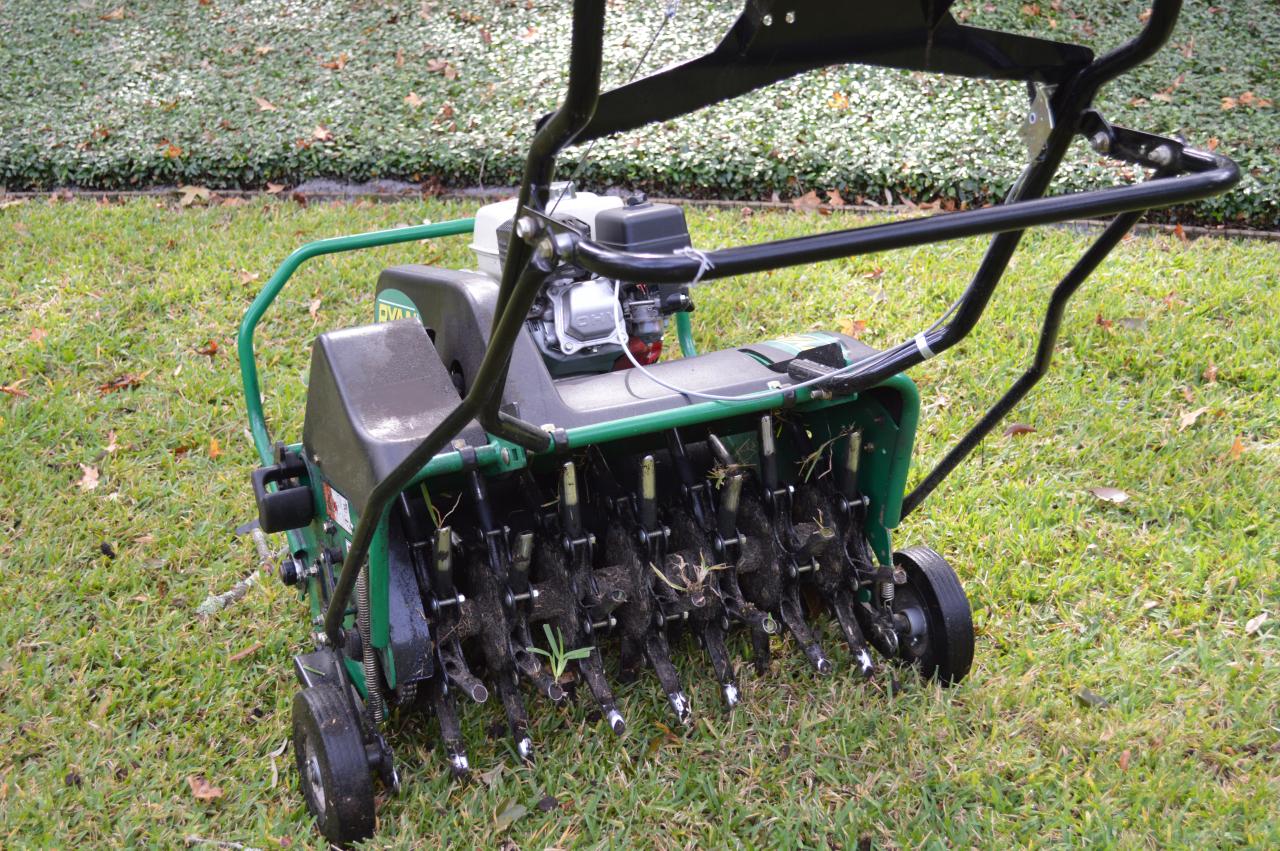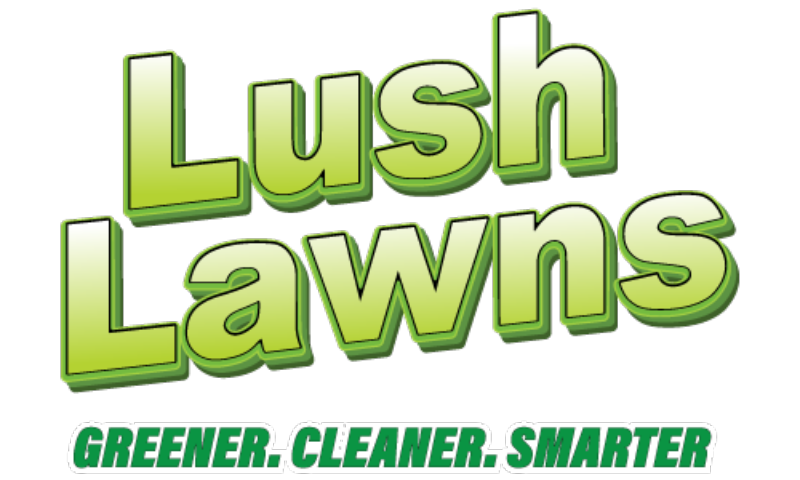Liquid & Mechanical Aeration
What is Aeration?
Technically speaking, aeration is the naturally occurring process of air exchange between the soil and its surrounding atmosphere. Practically speaking, aeration is the process of mechanically removing small plugs of thatch and soil from the lawn to improve natural soil aeration. It’s commonly called “core aeration” in the lawn service industry, and you may have heard of it as soil cultivation (coring, spiking and slicing). Most homeowners simply call it aeration. Turf grasses growing in our area benefit greatly from annual lawn aeration to reduce thatch buildup and more importantly, relieve soil compaction. This service will help improve the recycling flow of air, water, and nutrients to the root system. This, in turn, will help to rejuvenate your grass by allowing the roots to grow deeper, creating healthier grass plants, and keeping your lawn thicker and greener.
Benefits of Liquid Aeration

Benefits of Mechanical Core Aeration
Core aeration can help make your lawn healthier and reduce its maintenance requirements through these means:
- Improved air exchange between the soil and atmosphere.
- Enhanced soil water uptake.
- Improved fertilizer uptake and use.
- Reduced water runoff and puddling.
- Stronger turfgrass roots.
- Reduced soil compaction.
- Enhanced heat and drought stress tolerance.
- Improved resiliency and cushioning.
- Enhanced thatch breakdown.

WHY IS AERATION NECESSARY?
Compact soil prevents grass from establishing a healthy root system and keeps water and fertilizer from reaching the roots.
In most home lawns, fertile topsoil may have been removed or buried during excavation of the basement or footings, forcing grass to grow in subsoil that is more compact, higher in clay content and less likely to sustain a healthy lawn.
Walking, playing and mowing will compact soil and stress lawns. Raindrops and irrigation further compact the soil, reducing large air spaces where roots readily grow. Compaction is greater on heavy clay soils than on sandy soils, and it is greatest in the upper 1 to 1 1/2 inches of soil.
Aeration can help relieve soil compaction, allowing your grass to grow deeper roots and make better use of water and fertilizer.
RELIEVE THATCH ACCUMULATION
Most home lawns are subject to thatch accumulation. Left unmanaged, it impedes water, fertilizer and pesticide effectiveness. Core aeration combines soil with the thatch debris, so soil organisms are better able to break down the thatch and reduce its accumulation.
THATCH BUILDUP
Thatch Buildup – Although a thin layer of thatch is beneficial, thatch accumulation should not exceed 1/2 inch. Excess thatch blocks out air, light and water from reaching root zones. Core aeration reduces thatch accumulation and minimizes its buildup.
HOW OFTEN SHOULD LAWNS BE AERATED?
Most home lawns benefit from annual aeration. Heavily used lawns, or those growing on heavy clay or subsoils may need aeration twice a year. Golf fairways, sports turf and municipalities may need aeration three to five times per year depending on the amount of use. Again, turf responds best when tine spacing is closer and penetration is deeper.
WHEN IS THE BEST TIME TO AERATE?
Cool season turfgrass such as Kentucky bluegrass and perennial ryegrass, both spring and fall are ideal times to aerate. In spring, aerate between March and May. Perform fall aeration between August and November. Aeration before or at the time of late season fertilization enhances root growth and improves spring greenup and growth.
HERBICIDES, FERTILIZERS & AERATION
It’s best to aerate before you apply pre-emergence herbicides, rather than after. Aerating after a herbicide application can reduce the chemical barrier formed by the herbicide, allowing weeds to germinate. Applying fertilizer after aeration helps the lawn compete against weeds. Water the lawn after aeration, particularly in areas where drought and high temperatures are common.
WHAT CAN YOU EXPECT?
Immediately after aeration, your lawn will be dotted with small plugs pulled from the soil. Within a week or two, they break apart and disappear into the lawn. About 7 to 10 days after aeration, the aerification holes will begin to be filled with white, actively growing roots – a sign that the turfgrass is receiving additional oxygen, moisture and nutrients from the soil.
On compacted soils and on lawns with slopes, you should see an immediate difference in water puddling and runoff after irrigation or rainfall. After aeration, your lawn should be able to go longer between waterings, without showing signs of wilt. With repeat aerations over time, your lawn will show enhanced heat and drought stress tolerance.
Remember, most lawns benefit from annual aeration. And while you shouldn’t expect miracles, especially with poor soil, lawns that receive this care will be healthier, more vigorous, easier to maintain and have fewer pest problems.
* Please flag all irrigation heads prior to service. Lush Lawns in not responsible for any damage to subsurface irrigation lines or unmarked heads.
WHY CHOOSE US?
Lush Lawns is an independent lawn care specialist providing professional lawn care services to Attleboro, MA. We have several years' experience in the lawn care industry working with weed control and fertilizer products, irrigation systems, tilling, and lawn renovation.
Give us a call today for a complimentary quote
